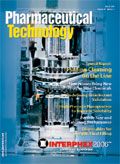The Book of Numbers
FDA's 2007 budget request funds homeland security and pandemic preparedness by reducing support for the agency’s core mission.
Back in the Cretaceous, when I was a new reporter covering boards of education and boards of selectmen and zoning boards for a New England daily newspaper, I quickly learned two things:

Douglas McCormick
Above all, "Stay on the good side of the administrative assistants." They control access to the boss, the reports, the copier, and the key to the men's room. And, seven times out of ten, they have a far better grasp of what's going on day-to-day than the guy (back then, it was invariably a guy) who is nominally in charge.
Second, and only slightly less important, "Budget power is the only power." I once memorized the entire object-function matrix of a small city's education budget in preparation for an interview with the superintendent.
I thought about the "budget-power imperative" and that long-ago feat of memorization while trying to get a handle on the just-released US Food and Drug Administration budget request for the 2007 fiscal year. Somehow, FDA's $1.95-billion budget proposal is just not coming together as clearly as a municipal school-spending plan.
Basically, the agency is asking for a $70 million increase from current-year levels, but has earmarked all of that increase for high-profile programs like homeland security and pandemic preparedness. (For a general outline of the budget request, see this month's "In the Field.")
As for details: my desk is creaking under the printout of FDA's "Consolidated Narrative," which at 224 pages is still just the executive summary (1). Specific figures aside, we could simply reprint last year's FDA-budget commentary, "Famine in Field Inspection" (2). Once again the budget slashes support for core programs to pay for increases in high-priority add-ons: $178 million for food safety to "secure the homeland," and $55 million for pandemic preparedness (more than double last year's figure, which was itself about five times more than the 2005 request).
To help pay for these increases, FDA is planning massive "strategic redeployments" of people and resources, away from bread-and-butter activities. FDA's Office of Regulatory Affairs, for example, will move 48 field workers out of established programs to cover the new priorities, and will cut its human-drugs field activities budget for the second straight year (to $79.8 million from 2005's $81.0 million). The agency is budgeting for 130 preapproval inspections for New Drug Applications (down from 149 in 2005) and for 135 preapproval ANDA inspections. The generic-drug inspections are, in fact, up significantly, from 81 in 2005. Is there a clearer illustration of the industry's profound shift towards generics? Yet, according to the Feb. 14 Washington Post, the agency will cut support for generics, even as the backlog of unreviewed generic applications as reached more than 800, the highest on record.
Meanwhile, the agency looks more and more to industry to fund its core functions. Prescription Drug User Fee Act (PDUFA) revenues should reach $229.9 million in 2007, fully 43% of the $534.9 million slated for human drug regulation. And now, FDA is looking for new sources of fee revenue, proposing a re-inspection user fee to cover follow-up inspections for facilities that fail current good manufacturing practice (CGMP) inspections.
One worries, though, that FDA's increasing dependence on the industry for revenue will inevitably create a vendor–customer relationship, replacing the culture of public welfare with a culture of customer service.
How much of FDA's fretting about the state of the industry's new product pipeline is due to concerns about public health, and how much of it is due to worries about future PDUFA revenue streams? And the institution of a reinspection fee, while guaranteeing resources for timely follow-up, might also create a financial incentive for agency inspectors to find fault during CGMP reviews.
These are pressing questions. Maybe I can find an administrative assistant to give me the answer.
References
1. US Food and Drug Administration, "Performance Budget Overview," (FDA, Rockville, MD, 2006), http://www.fda.gov/oc/oms/ofm/budget/2007/PDF/2ConsolidatedBIB.pdf accessed Feb. 15, 2006.
2. D. McCormick, "Famine in Field Inspection," Pharm. Technol. 29 (4), 16 (2005).

Drug Solutions Podcast: A Closer Look at mRNA in Oncology and Vaccines
April 30th 2024In this episode fo the Drug Solutions Podcast, etherna’s vice-president of Technology and Innovation, Stefaan De Koker, discusses the merits and challenges of using mRNA as the foundation for therapeutics in oncology as well as for vaccines.
Drug Solutions Podcast: Gliding Through the Ins and Outs of the Pharma Supply Chain
November 14th 2023In this episode of the Drug Solutions podcast, Jill Murphy, former editor, speaks with Bourji Mourad, partnership director at ThermoSafe, about the supply chain in the pharmaceutical industry, specifically related to packaging, pharma air freight, and the pressure on suppliers with post-COVID-19 changes on delivery.